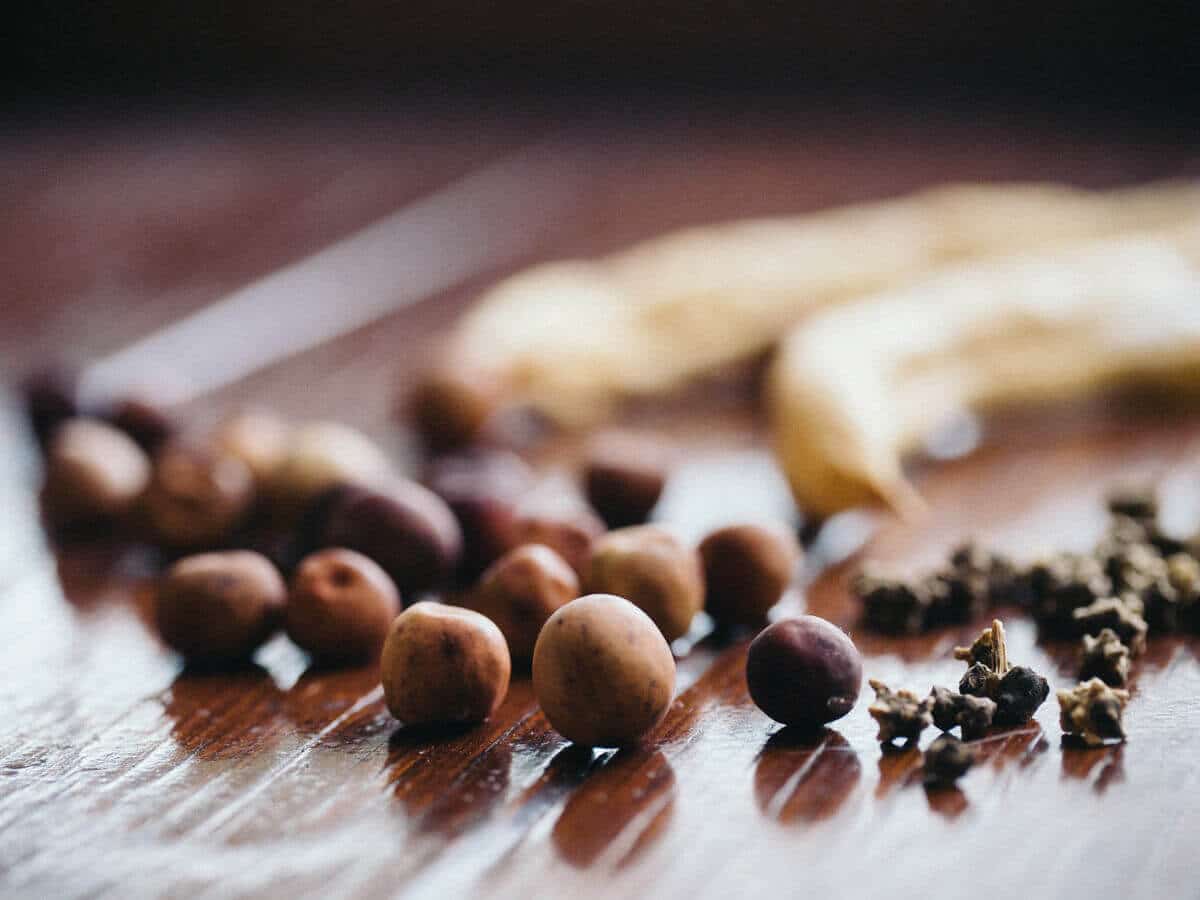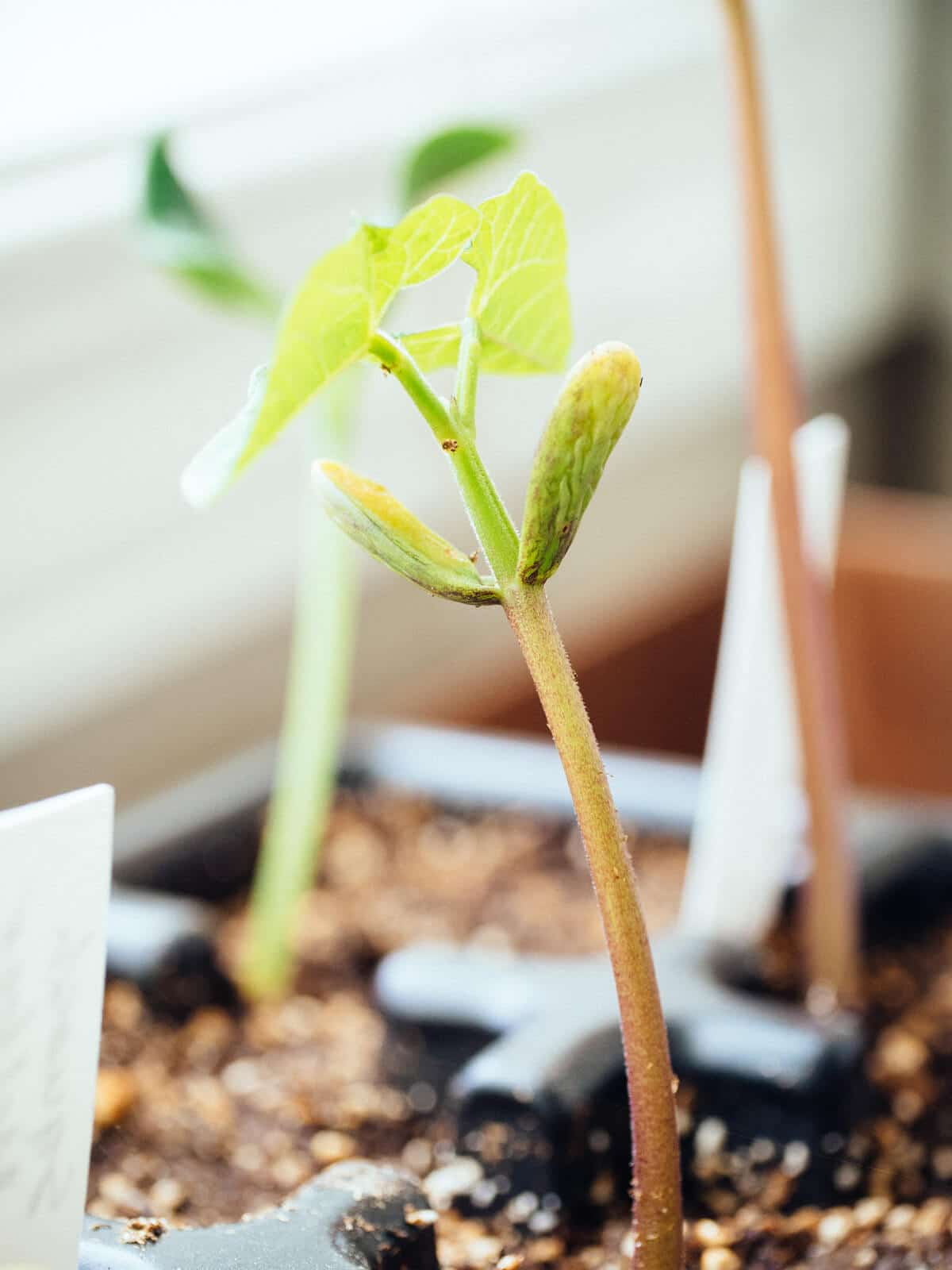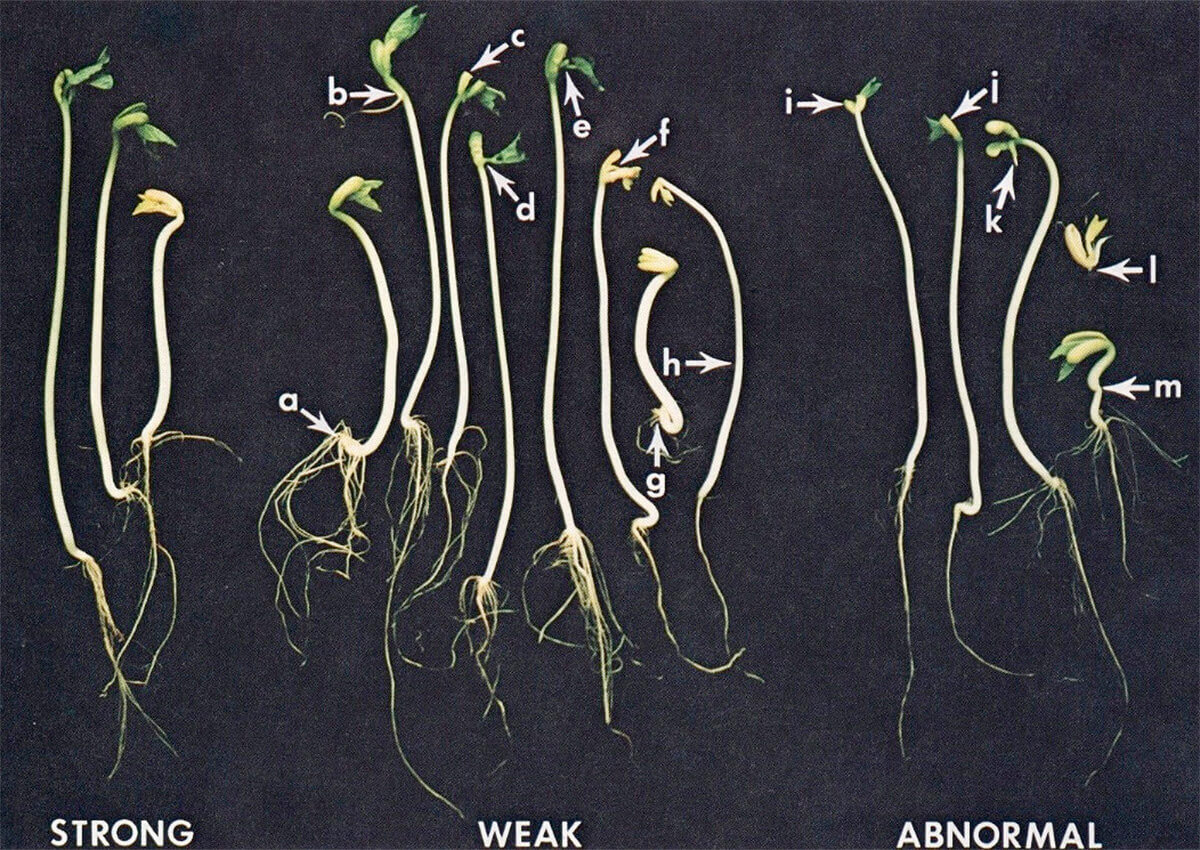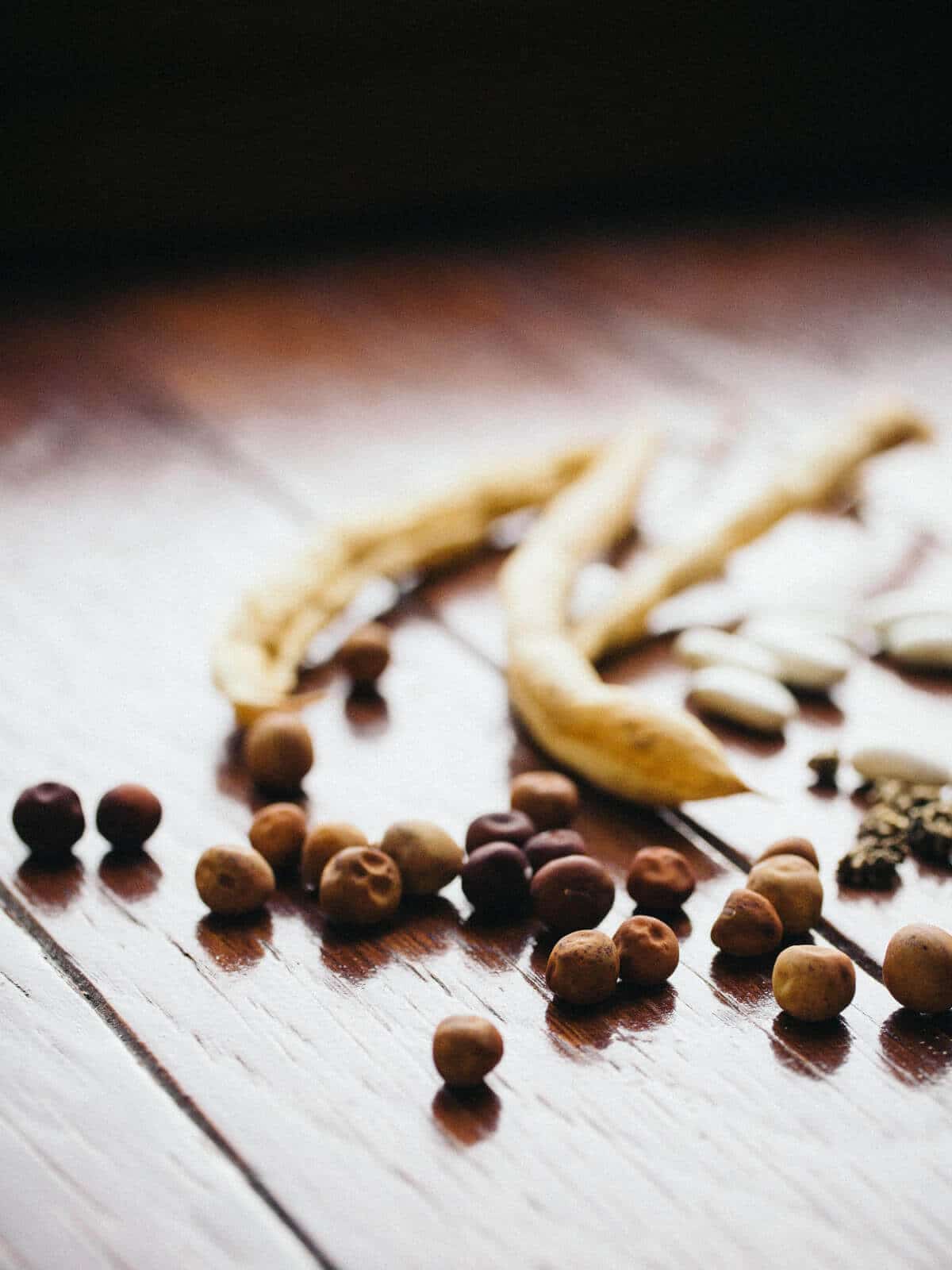The beginning of spring usually sees me sprawled in the middle of the living room floor, with all my seed storage cans, laying out rows and rows of seed packets sorted by vegetable and herb, and then by variety.
Some are even color-coded… and I realize I have a deep obsession with growing tomatoes of all kinds and collecting an entire rainbow of tomato seed varieties.
Related: These are the best tasting heirloom tomatoes you should try growing this year
Inevitably, a handful of seed packets get tossed in the compost pile as I double-check the dates… peppers from 2018, onions from three years ago. Yikes.
Some seeds I’ve only sown once or twice but still have half a packet left, some I’ve saved… and saved… and saved… because they’re so easy to save by the bagful every year (I’m looking at you, beans). Others are rotated every few seasons as I try new varieties, and by the time I make it back to those Parisienne carrots, it’s already been a couple years.
Are they still good? Should I get new ones? How long do seeds really last, anyway? I’ve combed through countless seed sites and extension sites over the years, wondering this very question.

So, how long do seeds actually last?
In general, you can expect most vegetable seeds to last two to three years after their packing date, though there are exceptions—like onions, which start to deteriorate after just one year.
Most herb seeds last about two years from their harvest or packing date, though basil (particularly sweet basil) can remain viable for up to five years.
But these “expiration dates” are just rough estimates, especially when you take into account the environment the seeds were stored in, the quality of the original crop the seeds were harvested from, and even the condition of the seeds themselves (as treated seeds will have a different lifespan than seeds in their natural state).
Seeds have a shelf life (as all living things do), and depending on where your particular shelf is, the viability of your seeds can vary by as much as a year or two.
When someone asks, “How long do bean seeds last?” a safe answer is three years, but in ideal storage conditions your seeds could still actually sprout after five.
So, you see where our dilemma lies.

Why seed vigor matters
Storage conditions are only one piece of the puzzle. Seed vigor matters, too.
According to Oregon State University, vigor is the “ability of those seeds to produce normal seedlings under less than optimum or adverse growing conditions similar to those which may occur in the field.”
In layman’s terms, vigor is the ability of your plants to survive outside with all the elements working against them (even if they’ve been hardened off), as opposed to being coddled indoors under grow lights or controlled conditions.

While you can predict seed germination rates by knowing when the seed was harvested/packed, or by doing a simple germination test like this one, ultimately you can’t really predict its vigor: how well a seedling will grow in terms of health, strength, uniformity, and root system, not to mention its production of flowers and fruits.
A seedling with compromised vigor may have a missing cotyledon, look stunted or scrawny, or seem overall slower to develop than seedlings from fresher seeds.

Try as they might, sometimes older seeds just don’t have it in them to sprout, grow, and go all the way to seed again. A will to germinate does not equal an ability to thrive.
What all this means: Your seeds may still be “good” as far as expiration dates are concerned, but the longer they’ve been stored, the weaker they’ll possibly develop. (Though there’s always that spunky outlier that still grows big and strong after many years!)

Average lifespan of vegetable and herb seeds
The chart below takes the average life expectancy of seeds from a variety of sources, including the cooperative extensions of Oregon State University, Colorado State University, Purdue University, and Virginia State University, as well as my own personal experience over the last decade-plus.
Consider it more as a guideline, as the shelf life of your seeds ultimately depends on the date on the packet and how carefully you’ve stored them since then.
Seed Viability Chart
| Vegetables | Shelf Life |
|---|---|
| Artichokes | 3 years |
| Arugula | 6 years |
| Asian greens | 3 years |
| Asparagus | 3 years |
| Beans | 3 years |
| Beets | 3 years |
| Broccoli | 3 years |
| Brussels sprouts | 4 years |
| Cabbage | 4 years |
| Cardoon | 3 years |
| Carrots | 3 years |
| Cauliflower | 4 years |
| Celery/celeriac | 4 years |
| Chard | 3 years |
| Chicory | 4 years |
| Chinese cabbage | 3 years |
| Collards | 4 years |
| Corn (sweet) | 2 years |
| Cress | 5 years |
| Cucumbers | 5 years |
| Dandelions | 2 years |
| Eggplant | 4 years |
| Endive | 5 years |
| Fennel (bulb) | 4 years |
| Kale | 4 years |
| Kohlrabi | 4 years |
| Leeks | 2 years |
| Lettuce | 3 years |
| Melons | 5 years |
| Mustard | 4 years |
| Okra | 2 years |
| Onions | 1 year |
| Parsnips | 2 years |
| Peas | 3 years |
| Peppers | 3 years |
| Pumpkins | 5 years |
| Purslane | 4 years |
| Radishes | 5 years |
| Rutabagas | 4 years |
| Salsify | 1 year |
| Soybeans | 4 years |
| Spinach | 3 years |
| Squash (summer and winter) | 4 years |
| Tomatoes | 5 years |
| Turnips | 4 years |
| Watermelons | 4 years |
| Herbs | Shelf Life |
|---|---|
| Basil | 5 years |
| Chamomile | 4 years |
| Chives | 2 years |
| Cilantro | 2 years |
| Dill | 2 years |
| Fennel | 2 years |
| Hyssop | 2 years |
| Lavender | 4 years |
| Lemon balm | 2 years |
| Lovage | 2 years |
| Marjoram | 2 years |
| Oregano | 4 years |
| Parsley | 2 years |
| Rosemary | 2 years |
| Sage | 2 years |
| Savory | 2 years |
| Thyme | 2 years |
This post updated from an article that originally appeared on March 17, 2015.
View the Web Story on how long seeds last.
















Hi Linda,
This is a great resource and thank you for providing it. One note — you have a link to a Virginia Tech publication but identify it as “Virginia State University”. That’s not a correct name. Virginia Tech or Virginia Polytechnic Institute and State University would be accurate. They have a really great ag school and should get appropriate credit. Thanks and have a great day!
Last spring I discovered a box with some old “emergency seeds” that I’d purchased back in 2009 but never used. (The seeds had been stored down in the basement all this time, inside the heavy metal box that they had shipped in.) I planted 16 heirloom tomato seeds and 16 heirloom sweet bell pepper seeds. They all sprouted and grew healthy, once I I figured out I needed to use a plant light, that is. I used your advice on gardenbetty.com on how to grow seedlings indoors and on transplanting, hardening, and what to put in the hole when planting–and it helped a lot! I ended up with a huge crop of beautiful heirloom tomatoes and some green peppers.(I will say that the peppers did not grow very big, but it might have been the weather here last summer and not the fault of the seeds–especially since the pepper plants themselves looked fine, both indoors and once planted in the garden.) The tomatoes, on the other hand, did great all season long.. I canned some and gave hundreds away to friends, to the Salvation Army, etc. I even pulled up a few tomato plants and set them on newspapers in my toolshed near a window to be able to harvest a few dozen more tomatoes. This experience proved to me that a good heirloom seed can sometimes grow just fine, many years later, when stored optimally.
Exactly! You just never know! I’m so glad those seeds thrived. 🙂
I thought seeds are like diamonds… they last forever
Only in the deep freeze. 🙂
Julius i need a woman last forever lol
There is a seed vault in ???? where they are trying to preserve seeds in case of a global catastrophe. Couldn’t we try to achieve their storage conditions and if so what are they?
There are many seed vaults all over the world, but you’re probably thinking of Svalbard in the Arctic Circle. And yes, you can, but most people don’t have walk-in freezers that are dialed in to the perfect humidity levels needed to sustain long-term seed storage (in special foil packs, no less).
For the average home the best storage condition is this (copied from my post):
Seeds store best below 40°F with less than 10 percent humidity, tucked inside airtight containers in a dark environment.
Betty, wow, really good job! Amazing idea for the post as I didn’t know many of these information. I don’t keep my seeds long, for sure, because I have got a lot of space to grow plants; however, you’ll never know what can happen. Do you think that this chart matches to all varieties of one kind? For example, I have Salsify on which date is a bit more longer than one year (I have ordered it on https://gardenseedsmarket.com/scorzonera-black-salsify-seeds-scorzonera-hispanica.html ), I hope that seeds will be still “to use” 🙂
These are just rough guidelines of how long the seeds should last, but in general, they apply to all varieties of the same plant. Your salsify will likely still germinate after a year, but it may get progressively weaker each year after in terms of how long it takes to germinate and mature. You never know unless you try. 🙂
NEXT YEAR ALL SEEDS WILL BE PUT OUT NO MATTER THE PATTERNS; NO MORE WILL BE SAVED; THANKS JOE
Thanks for such good information on a perennial question. A couple years ago, more as a lark than an act of optimism, I planted some 20-year-old Tithonia seeds (Mexican Sunflowers). To my amazement, they sprouted and grew into vigorous plants! I was extremely gratified, although I realize this is probably highly unusual.)
Wow, impressive lifespan for those seeds!
Yes, it was fun to see them come up! A few years later, though, I was bummed when I planted a fresh batch and not one came up. Couldn’t understand what happened until I discovered belatedly that they don’t germinate unless planted shallow enough to be exposed to light. Details, details. =8^)
Thank you so much for the work you put into this article. I appreciate it’s thoroughness and creativity.
You’re welcome! I’m so glad you found it helpful.
I have a habit of purchasing seeds and then never using much of them. I still have some pea seeds from 1980. I know that under certain circumstances seeds can last a very very long time. I will have to plant some of these old seeds this year and see if any of them take.
Try the baggie method to sprout these older seeds and see how viable they are: https://gardenbetty.com/starting-seeds-in-coffee-filters-or-paper-towels/
Thank you for the awesome article! Until now I had to be really careful when buying seeds, because it was hard to tell whether they were going to last long or not, and if they could sprout and grow with enough vigor at all. But with this cheat sheet I can finally sort out my crop rotation plan with ease!
Happy planting! I’m about to inventory all my seeds before spring gets here, too.
I just went through the list & sorted out old seeds, throwing away any that were beyond this list. After reading comments, I retrieved them from the garbage. Will have to wait until next year to test.
Excellent article & informative comments!
Thank you! I would definitely test the germination rate of any seeds that are close to the suggested expiry dates in this post, but if you have the time and inclination, you could always test the ones that are far beyond expiration just for fun. 🙂
I found a pack of basil seeds that were dated for the 2003 growing season. I sprinkled them on soil in April and I’ve got a bunch of basil plants that are about three inches high now and growing taller each day. The seeds were in an office cabinet for the past 15 years so they weren’t stored in any special way.
That’s pretty amazing!
I have been gardening on a budget for over 30 years. When I bought my first house, the old fellow who sold it to me left some tomato seeds. If I remember correctly they were early girl and judging by the packet they were several years old. I used these seeds for 16 years until I sold the house and left the seeds for the new owner.
One of the last crops that I grew in that house included paprika peppers. I dried them and used them in the kitchen until they were almost all used up. 14 years later, I found one dried pepper in my kitchen cupboard and decided to try the seeds for viability. I planted 12 seeds and all came up on the 3rd day. I gave most of the plants away but grew 4 of the remainders. One plant alone has provided 35 peppers 8-10inches long.
In both cases I did nothing special to preserve these seeds. They were simply kept in a dry place.
Fourteen years, I’m impressed! They’re survivors, for sure. 🙂
First I would like to thank you for all the time and work that you put in this study. I want to use this to judge how long to keep my seeds. But, are these seed expectancies base on shoe box storage or refrigerated storage?
Regular shoebox storage in cool, dry conditions. 🙂 If you refrigerate your seeds and keep them at ideal humidity levels, you can expect them to last even longer.
Again thank you. 🙂 I will print this time table out and put it in the shoe box with the seeds.
I love the water and paper towel germination test. That let’s me know if I am good to go or not. I have an obsession with seeds and yes some get really old….
Obsession with seeds? I have no idea what you’re talking about. 😉
I am too obsessed with seeds… when I go to farmers market I save the seeds on what ever I picked up… but when I grow them and which they come out healthy and full of life and by the time they flower they never bear fruit.. I would assumed farmers market that claim themselves organically grown will have no chemical to prevent from re producing thru their seeds… I am lost… I want to see what I plant and know were its coming from…. do you think this local farmers market are in just for the fad of locals wanted to support locals…
Only heirloom and open-pollinated varieties produce stable seeds that stay true to the breed. (Read more about this in my seed-saving post: http://gardenbetty.com/2011/09/a-guide-to-saving-and-storing-seeds/ )
If you saved the seeds from hybrid vegetables and tried to grow new plants with them, they may produce sterile seed, or produce fruits that don’t resemble the parent plant at all. There ARE organically grown hybrids, but they’re not ideal for seed saving.
The reason why that happens is most fruit is harvested when they first become ripe. But in order to save seeds from them they need to stay on the vine a lot longer.
How Long Do Seeds Really Last? (Plus, a Cheat Sheet on Seed Storage Life) http://t.co/uALXzMdKMd < TY for RT! @ModernVegPlot @RedHouseGarden
How Long Do Seeds Really Last? (Plus, a Cheat Sheet on Seed Storage Life) http://t.co/188GQVdlN4 < TY for RT! @BklynGardener @ExtravagantG
RT @theGardenBetty: Don’t be a seed hoarder. How Long Do Seeds Really Last? (Plus, a Cheat Sheet on Seed Storage Life) http://t.co/jkaBmQk7…
Don’t be a seed hoarder. How Long Do Seeds Really Last? (Plus, a Cheat Sheet on Seed Storage Life) http://t.co/jkaBmQk7xh #gardenchat
RT @theGardenBetty: Germination ≠ vigor. How Long Do Seeds Really Last? (Plus, a Cheat Sheet on Seed Storage Life) http://t.co/188GQVdlN4 #…
RT @theGardenBetty: Germination ≠ vigor. How Long Do Seeds Really Last? (Plus, a Cheat Sheet on Seed Storage Life) http://t.co/188GQVdlN4 #…
Germination ≠ vigor. How Long Do Seeds Really Last? (Plus, a Cheat Sheet on Seed Storage Life) http://t.co/188GQVdlN4 #gardening #gardenchat
RT @theGardenBetty: Do an inventory of your seeds this spring: How Long Do Seeds Really Last? (Plus, a Cheat Sheet on Seed Storage Life) ht…
RT @theGardenBetty: Do an inventory of your seeds this spring: How Long Do Seeds Really Last? (Plus, a Cheat Sheet on Seed Storage Life) ht…
Do an inventory of your seeds this spring: How Long Do Seeds Really Last? (Plus, a Cheat Sheet on Seed Storage Life) http://t.co/uALXzMdKMd
RT @OliversGProject: How do you know if your seeds are still viable? How do you find out? Look no further! http://t.co/D5sPwiG84F
RT @OliversGProject: How do you know if your seeds are still viable? How do you find out? Look no further! http://t.co/D5sPwiG84F
How do you know if your seeds are still viable? How do you find out? Look no further! http://t.co/D5sPwiG84F
Check the dates on your packets! How Long Do Seeds Really Last? (Plus, a Cheat Sheet on Seed Storage Life) http://t.co/u2p2CxUTlM #gardening
Thank you for the handy list! Like many, I just had no idea what to expect from my old seeds. I definitely had some failures this year: 3yo onions and 4yo spinach. I’m still waiting to see what happens with some 3yo peppers. I think it’s time to edit my stash!
This year I combined all my leftover carrot seeds from a few years ago and just broadcast them into a tray… whatever decides to spring up will be a bonus this season!
RT @theGardenBetty: How Long Do Seeds Really Last? (Plus, a Cheat Sheet on Seed Storage Life) http://t.co/6Jn97GZoH6 #gardenchat
RT @theGardenBetty: How Long Do Seeds Really Last? (Plus, a Cheat Sheet on Seed Storage Life) http://t.co/6Jn97GZoH6 #gardenchat